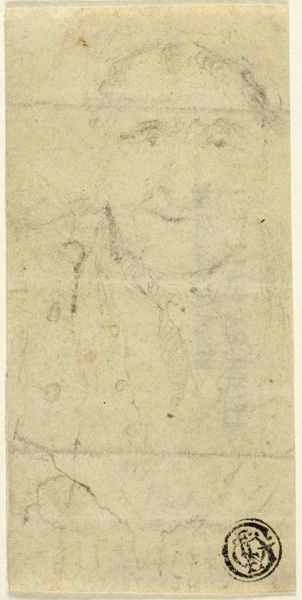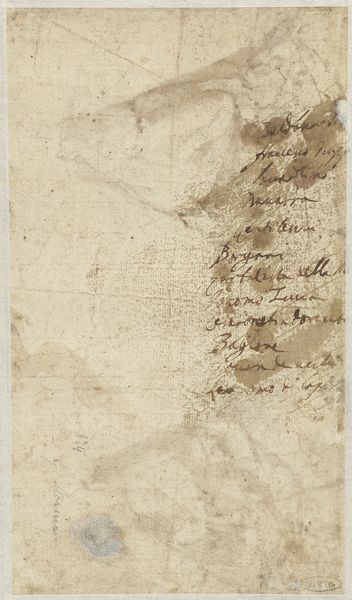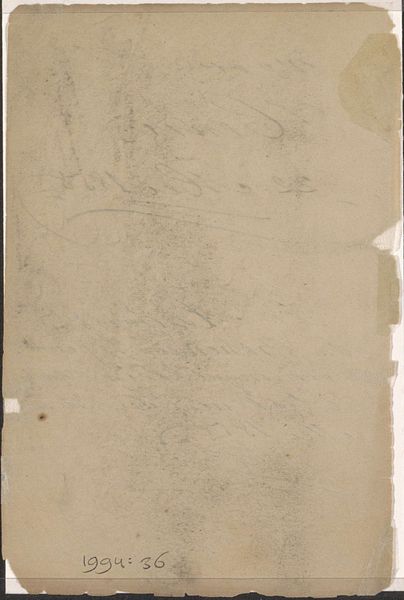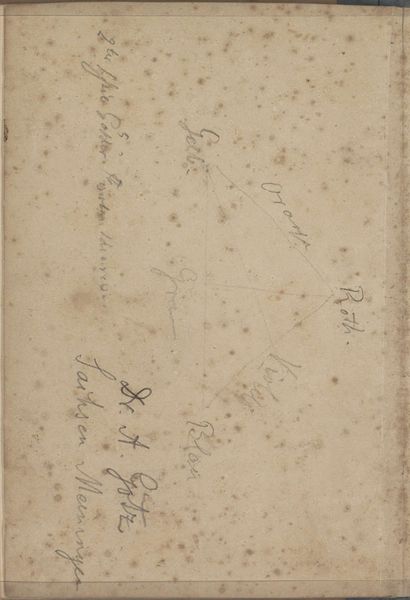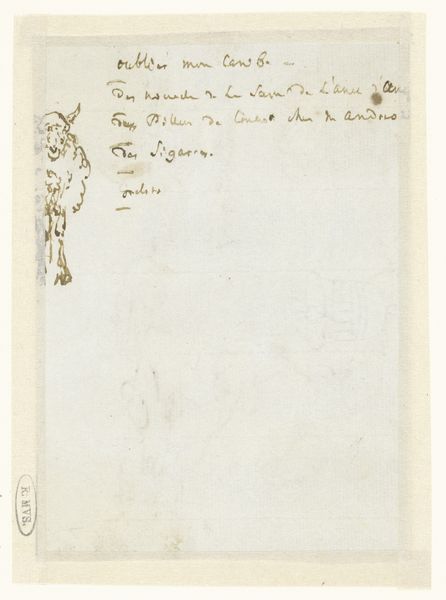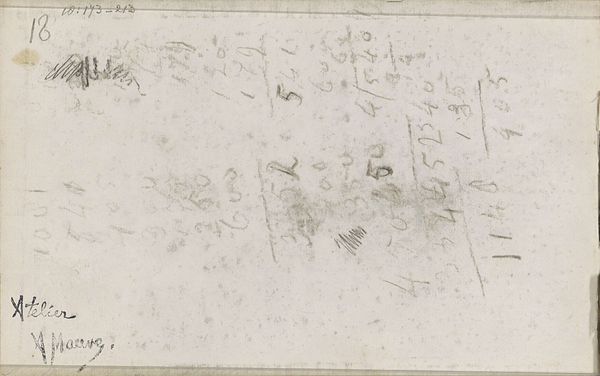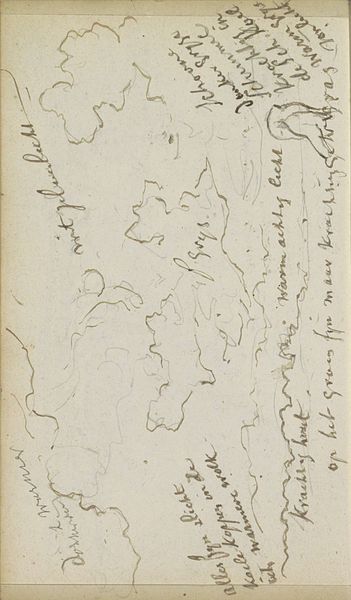
Restrike from fragment of cancelled plate for "A Prophecy" 1793
0:00
0:00
drawing, print, pencil
#
drawing
#
narrative-art
# print
#
figuration
#
romanticism
#
pencil
#
line
Copyright: National Gallery of Art: CC0 1.0
Curator: Looking at this delicate drawing, created around 1793 by William Blake, a restrike from a fragment of a cancelled plate for "A Prophecy," one is immediately struck by the contrast between the ethereal, almost faded quality, and the powerful words that are still legible. Editor: Yes, there's an almost dreamlike state evoked, despite the assertive text, especially where it speaks of America's shores. The faint, brown lines suggest something ancient and foundational, almost as if uncovering a long-forgotten myth. Curator: Indeed. Blake was deeply engaged in the political upheavals of his time. This piece reflects on the revolutionary spirit of the American colonies, while simultaneously critiquing contemporary British society, a period that saw significant suppression of radical voices. The figure lurking behind the verse may point at an anxiety, and I'm not quite sure how to decode that specific figure. Editor: Perhaps it serves as a visual representation of the prophetic voice, a shrouded figure bearing witness to these historical shifts. We know how interested Blake was in religious and philosophical symbolism, so a figure would be imbued with layered meanings of transformation. And isn’t it interesting how the bottom-line calls to read the "voices of the Ancient Bard"? Curator: Precisely, Blake sought to channel this historical critique, aligning himself with ancient traditions and figures who challenged the status quo. This links him directly with Romanticism and their fight to promote imagination, individuality and the celebration of the beauty and sublimity of nature. Blake very much embraced a historical revisionism of sorts. Editor: Considering the romantic element you introduce here, one wonders how Blake used imagery not just to reflect history, but also to shape perceptions of his current time, using the past as a foundation for something radical. It leaves us pondering on the layers that images accumulate as cultural history evolves, adding nuance and reinterpretation with each passing era. Curator: The act of taking what was “canceled”, only to produce it as a "restrike" embodies Blake's defiant attitude toward censorship and creative suppression. A message all the more critical during turbulent political environments such as the 1790s England. Editor: Ultimately, encountering this plate compels one to consider how intertwined historical events, symbolic imagery, and individual artistic vision, are together crafting something truly memorable.
Comments
No comments
Be the first to comment and join the conversation on the ultimate creative platform.
